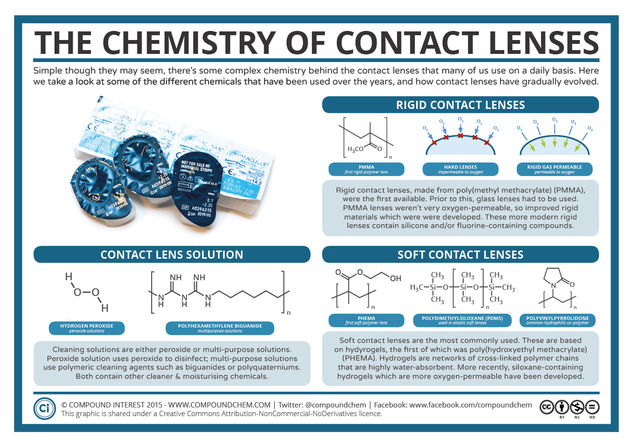© Compound InterestThe Chemistry of Contact Lenses
For objects that essentially look like thin plastic films, there’s a surprising amount of chemistry behind contact lenses. This chemistry is designed to maximise comfort whilst they are being worn, and as such it’s also been constantly evolving and improving. Today’s post takes a look at some of the chemicals they have been composed of over the years, as well as what’s in contact lens cleaning solution.
Contact lenses have been around since the late 1800s, although in a far more uncomfortable guise. They were originally made of glass, folded from the eyes of rabbits or corpses, and could only be worn for short durations, no more than a few hours. These glass lenses were subsequently made slightly thinner, but didn’t really lend themselves to comfort, and as such never really became particularly popular.







